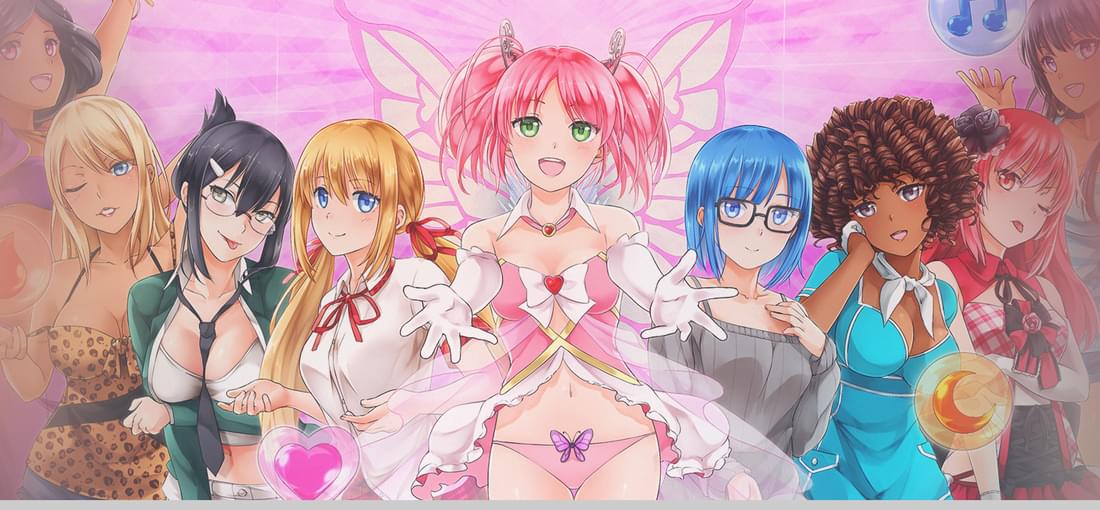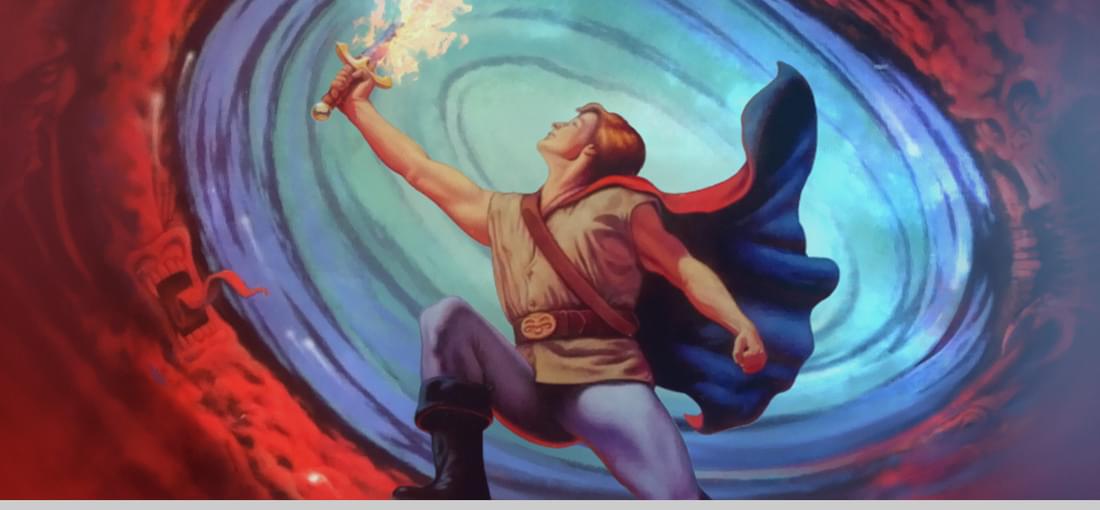


As already made clear by other reviews, this is a porn game, or rather a modern day equivalent of strip poker... with cartoon/anime-style girls. If this sort of things repels you from the get go, stay clear of it. The game alternates between a "story mode", where you chat up girls and try to get to know them, and a "date mode", which is a match-3 game. The "story mode" resembles a dating sim, but actually is more like an annoying minigame where you have to remember what the girls tell you because they can quiz you at any time. The overall plot is just an excuse to put together the most disparate girl types and give you a reason to try and have sex with all of them. I didn't expect good writing from such a game, but I found the girls both stereotypical and irritating, with just a couple lines of dialogue stealing a laugh. There is also a management aspect in the game, with two type of currencies, "hunie" and "munie", which can be used to improve your relationship with the girls and boost your performance in the ever more dificult "dates". "Hunie" is gained by chatting with girls while "munie", counterintuitively enough, is gained by going on dates. It is however quite easy to figure out how to keep your coffers full, so it's hardly a challenge. As already remarked by others, the main component of the game is the match-3 "date". I am not an expert of these games but I found it very well done. However, the difficulty ramps up pretty quickly and the timed version necessary to "clear" each girl made me scream in frustration, so it can be a pretty hardcore game in its later stages. In conclusion, my opinion is that this game would have been much better as a pure match-3 experience rather than the dating sim hybrid it is. I would give it 3 stars, but I will detract one for the GOG version specifically because it's censored (the nudes are not the main component of the game and you can de-censor it with a patch from the devs, but it's a question of principle).
As the title of my review says, the game succeeds in its basic duty as a graphical adventure to tell an interesting story (upon close examination, there are certain details that make little sense, but it does not require more suspension of disbelief than your average movie), so my overall rating would be a "pass", however there are many peculiar design choices and outright shortcomings that need to be mentioned: - The graphics are based on 3d models (characters and manipulable objects) on 2d backgrounds. While the backgrounds are nice, they do not always blend well with the characters and the animations in general leave a lot to be desired. Somehow, this gets even worse during cut-scenes, which have a "late 90s flavour", and I don't mean it as a compliment. - The game lets you pick up an object only when the character has a reason to do so, so it is not possible to resort to the standard technique of "taking everything that is not nailed to the floor" to solve the game. This design choice necessarily implies some backtracking and could have been a huge annoyance, but in the game works quite well, partly because most puzzles have a logical solution, and because at any given time there is only a limited amount of objects and locations accessible. - There are puzzles in the game where you have to "analyse" people or objects, which means in practice matching a number of possible explanations for different clues. The idea is nice, but the execution is a bit "hit or miss", with some solutions being seemingly arbitrary. None of these puzzles is too difficult, in any case. - Some of the chapters of the game take place outside of the US. Especially the dialogue of the early chapters (set in Italy and France) is particularly grating, with both the main character and the "locals" speaking English -with or without fake accent- and substituting certain words with corresponding ones in local language ("Monsieur", "Signore", etc.): it'd been better just to stick to plain English.
This is my favourite game in the trilogy, I will try to summarize its strong and weak points also with reference to the other two games. Graphics & interface: essentially an updated version of Book 1, which means a graphical quality pretty good for its time and a pure point and click interface. Puzzles: I think, it's the most balanced of the three games. The solution of the various puzzles is generally never arbitrary (as it may appear sometimes in Book 1) nor it requires the application of weird logic as in Book 3. Compared to the first game, which consisted of a few zones each comprising a fair number of locations, Hand of Fate is made up by more scenes/acts, each with a reduced number of locations but with more things to do in each of them. Story: it is a light-hearted fairytale, which serves little else but as a framework for Zanthia's adventures. Despite the premise (Kyrandia is disappearing and you must prevent it from vanishing out of existence by finding a magical artefact) most dialogue is tongue in cheek and most situations are somewhat humorous. Gone are also the sudden deaths that could occur in the first game (in fact, unless my memory plays me tricks, it is not possible to die at all). It is also worth mentioning that, some cameos from the first game aside, no knowledge of the event of Book 1 is needed to enjoy the game. All in all, it's a game that I heartily recommend to all graphical adventures' fans!
Although less known than the LucasArts or Sierra games, the Kyrandia series firmly deserves a place in the history of graphical adventures. In my opinion, the highlights of the game (good and bad) are the following: - Historically, it was one of the first (if not the first) graphical adventures to do away with verbs and to present a pure point and click interface. In addition, the quality of the graphics and of the graphical effects was absolutely top notch at the time. - If you have played the other two games, know that the legend of Kyrandia has a completely different atmosphere: despite the abundance of colours, the tone of the game is rather somber, with only occasional bouts of light-heartedness. - Contributing to the overall tone of the story, most of the game is spent travelling alone in the wilderness of Kyrandia, and it is very easy to die there. Although the game generally gives hints that something is dangerous, the limited amount of interaction options that the user interface offers means that you'll likely die while trying to figure out what to do, even if you noticed the "danger" signs. - The game does not give a lot of hints about what is to be done to solve the puzzles, so many of them give the feeling that you need to use trial and error to solve them.

Anyone not familiar with the fanchise might think that it's just another "quest" series from Sierra's heyday, and in a sense that's true, but it's also much more than that. In essence, QfG is a graphical adventure with RPG elements. While nowadays RPG routinely include elements that are typical of graphical adventures, QfG tried to create a hybrid starting from the graphical adventures' side. This was very innovative at the time and to this day, the five QfG games are the only attempts in that direction (that I know of, at least). The games themselves are based on a variant of Sierra's classic SCI engine, with the exception of QfG 5. QfG 1 and 2 works with text parsers, whereas 3 to 5 have a point and click system with pictorial icons reperesenting available "verbs". For those who cannot deal with parsers, a VGA remake of QfG1 using the newer interface is included in the package, and a free AGS based fan remake of QfG can be found on the net. The games themselves tell the strory of an unknown adventurer, and his quest to become a hero of legends. At the start of the game, the player is asked which character class he's going to play as (Fighter, Magic User or Thief, with the bonus class of Paladin being available from QfG 2 onwards) and he's offered some (limited) options to further customize his stats. The actual gameplay is very similar to that of a normal Sierra adventure, except that some RPG style management of money/equipment is also needed. Furthermore, like most RPGs there are monsters prowling around which you can choose to either fight or flee from (there are also some enemies that give you instant Sierra-style game over when challenged, but usually there are hints to warn you of such a possibility). While the RPG aspects mentioned above give flavoring, what provide the games with a distinct style is that the puzzles the players have to solve have multiple solutions, so different classes have to figure out different ways to solve them. The philosophy is similar to the three paths of Indiana Jones and the Fate of Atlantis, except that here instead of a three different storylines which share a number of locations we have one single storyline wherein challenges are overcome differently by different heroes. Another - for the time fairly groundbreaking - feature of the series is that once a game is beaten, it is possible to export the character to the following games; for this reason I would REALLY recommend to play the games in sequence. Furthermore, as the hero is the typical silent protagonist, most of the tone of the story - generally light-hearted and tongue in cheek, but also with moments which show a certain depth- is set by the cast of NPCs, most of which appear and evelve throughout different episodes, and whose characterization can therefore be fully appreciated in a sequential playthrough of the series. Lastly, it's worth mentioning that the series often went to explore settings and related mythologies which are not much explored in games, such as african savanna (QfG 3) or slavic countryside (QfG 4).